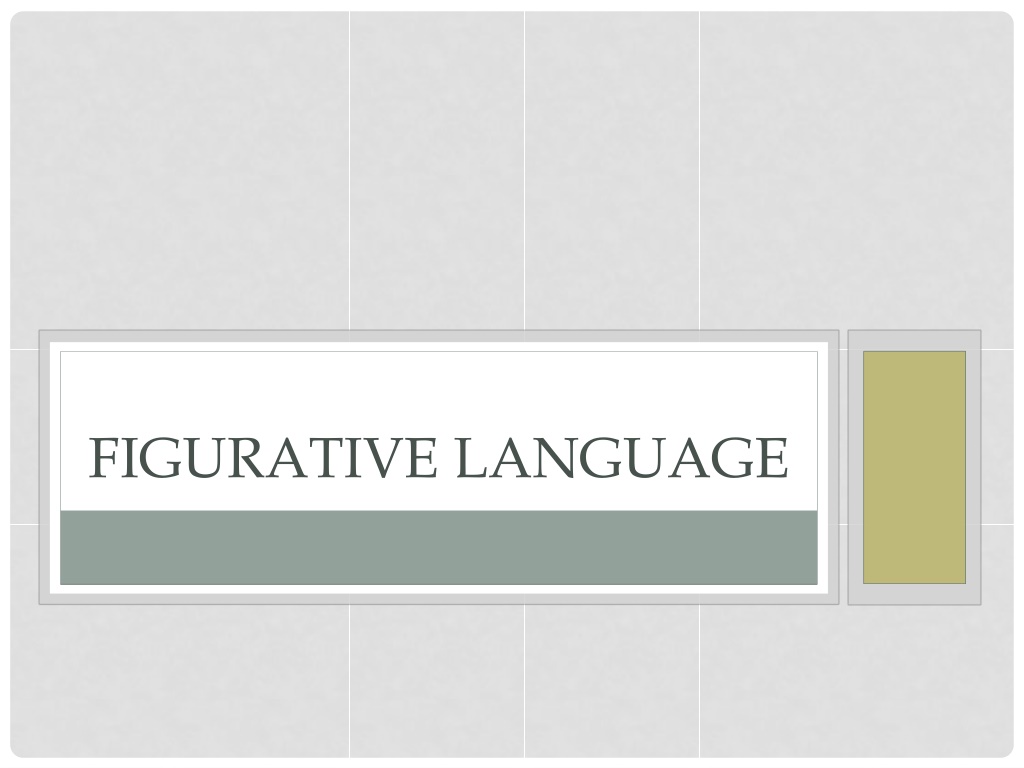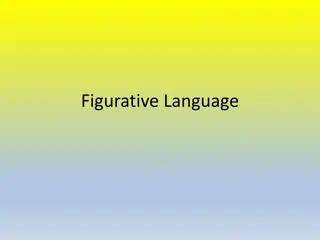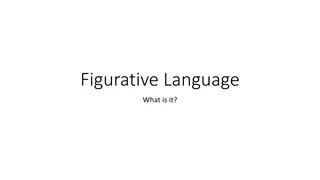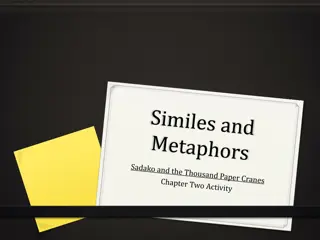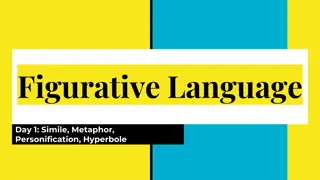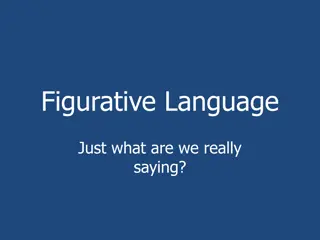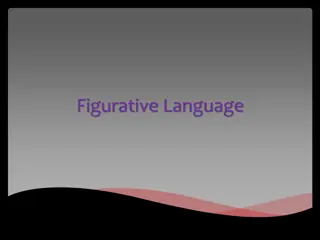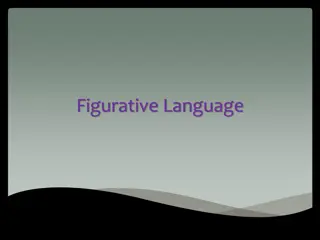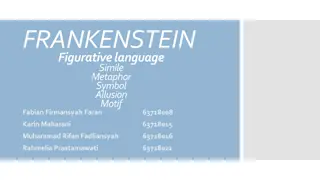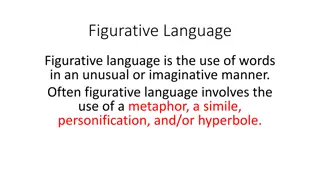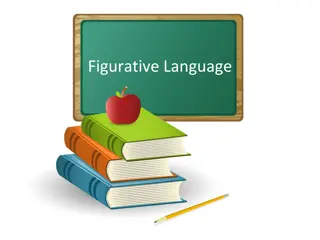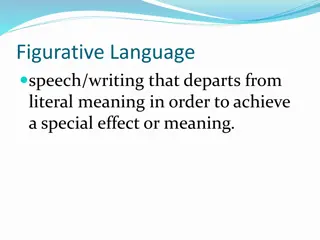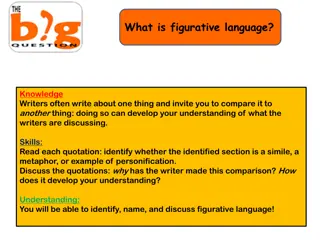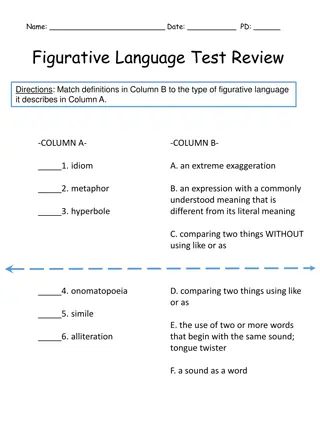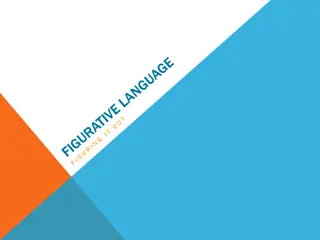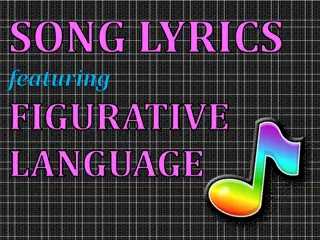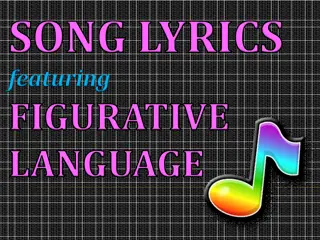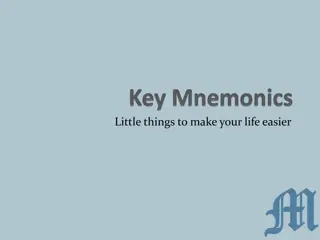Exploring Figurative Language in Writing
Figurative language enhances writing by creating visual imagery and deeper meaning. Understanding its use improves reading comprehension, plot analysis, and character motivation recognition. Through examples like similes, metaphors, personification, and idioms, readers can grasp the nuances of figurative language and appreciate its impact on communication.
Download Presentation

Please find below an Image/Link to download the presentation.
The content on the website is provided AS IS for your information and personal use only. It may not be sold, licensed, or shared on other websites without obtaining consent from the author. Download presentation by click this link. If you encounter any issues during the download, it is possible that the publisher has removed the file from their server.
E N D
Presentation Transcript
WHY USE FIGURATIVE LANGUAGE? It makes my writing interesting. It is a way to show , which is better than tell . It creates a vivid picture in the reader s mind.
WHY UNDERSTAND FIGURATIVE LANGUAGE? Improves my reading comprehension. Helps me understand the progression of plot. Helps me understand the motives of characters. Requires me to draw inferences so gives me practice with this skill.
HOW CAN WE UNDERSTAND FIGURATIVE LANGUAGE? I must know the difference between the literal meaning of figurative language and the figurative meaning of figurative language. Literal Meaning: What it means if I accept it at face value what it says right there Figurative Meaning: What it means when I explore how the author is using the figurative language; what the author is trying to say about an event, setting, or character.
SIMILE Definition: Figure of speech where two unlike things are compared using like or as. Example: My brother is as loud as a police siren. Literal meaning: When Matt s brother opens his mouth, we hear a loud siren wailing. Figurative meaning: Very, very, very loud.
METAPHOR Definition: Figure of speech where one thing is referred to as if it were another; comparison of two unlike things Difference between simile and metaphor: Metaphor does not use like, as. Metaphor: Example: My arm is a soggy waffle. Example: Mrs. Hynes is a bear today. Example: The snow was the cool delicious milk in my cereal bowl. Example: Life is a broken-winged bird that cannot fly.
PERSONIFICATION Definition: A type of figurative language where a nonhuman subject is given a human characteristic. Example: Sorrow knocked on my door, but I was afraid to answer. Example: Trees danced in the wind.
IDIOM Definition: Expression that has a meaning particular to a language or region Example: Break a leg. Literal meaning: Right there meaning break your leg. Figurative meaning: Good luck.
OTHER IDIOMS They re dropping like flies. Face the music. Pull out all the stops.
